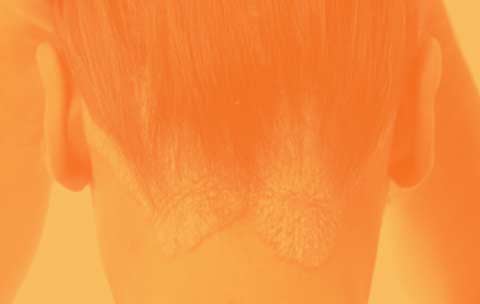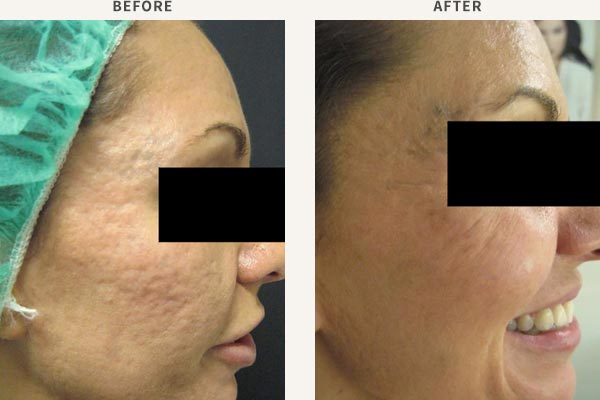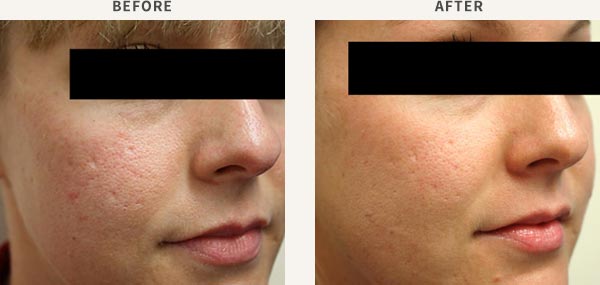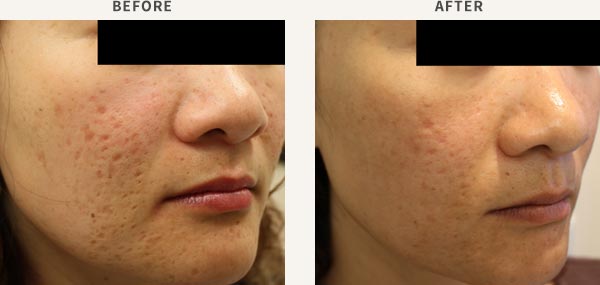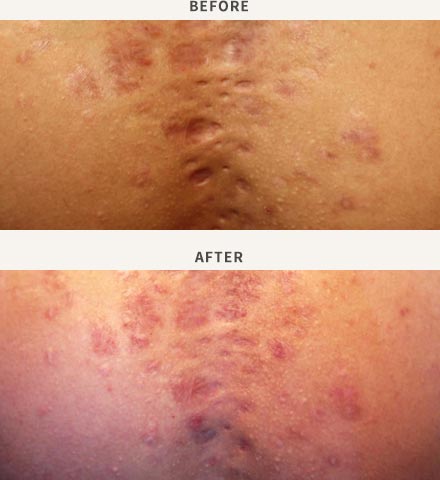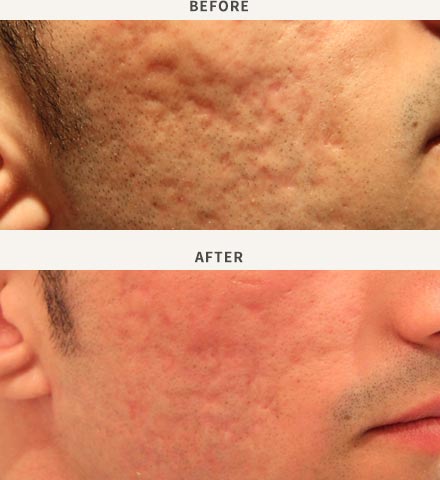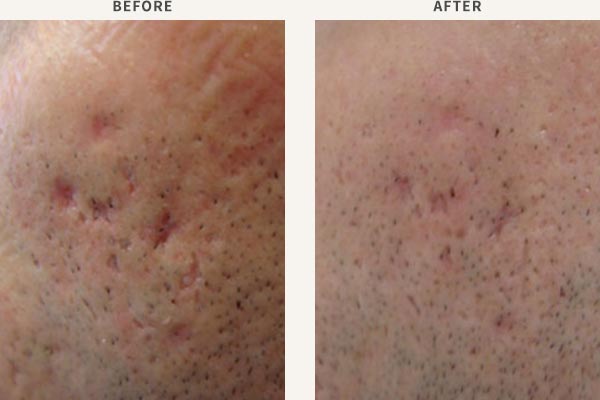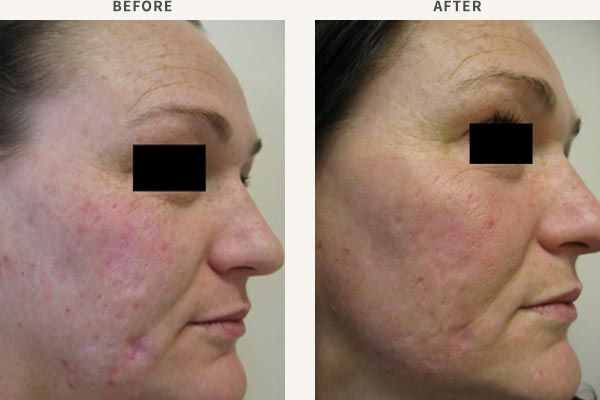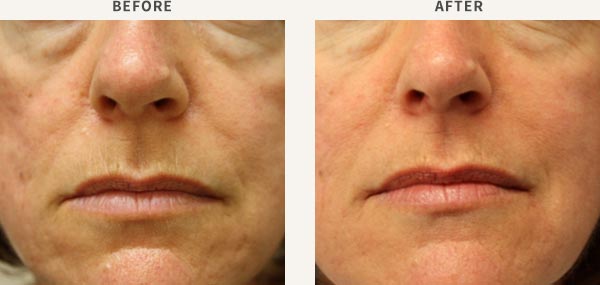Subscision
This procedure involves inserting a sterile needle deep into the acne scar dissecting the fibrous tissue. This releases the scar and helps it rise to the surface. The procedure also stimulates the formation of new collagen which pushes the scar to the surface even further. Fillers and fractional laser can be used following subcision to speed up the process.
Fractional Laser Resurfacing
Fractional laser resurfacing is a new concept in skin rejuvenation that has revolutionised the treatment of acne scars, facial pigmentation and wrinkles.
The treatment induces thousands of micro-punctures to the skin, deep enough to stimulate the old collagen and elastic fibres to self-repair while leaving the surrounding tissue intact. This treatment allows the skin to heal much faster with minimal downtime. It promotes the body’s natural healing process and stimulates the growth of new collagen to create new tighter tissue to replace skin imperfections. Overtime, the scar becomes smoother, softer and regains the texture of normal skin.
Sydney Dermatology Group uses a Sciton Profractional Erbium Laser rather than the traditional Fractional Erbium-Glass lasers. This laser treatment is fast, as it requires just one pass across the affected area. Patients being treated on Friday can return to work on Monday.
Dermal Fillers
Fillers are best used for dish-like acne scars or scars that can be easily stretched out. The more mature and supple the scar, the better the results. Due to the localised trauma from injection or any filler, the body produces some collagen, therefore the scars treated with fillers become less deep after the first injection. The variety of dermal fillers available includes collagen, hyaluronic acid, poly-L-lactic acid, implants and fat transfer.
See Cosmetic Procedures – Dermal Fillers for more information
Intralesional Injections
Intralesional corticosteroids have been used to treat scars since the mid-1960’s and are a first-line therapy for keloids or raised lumpy scars. Commonly, the injection is performed at four to six week intervals. The steroid works by reducing and flattening the scar.

